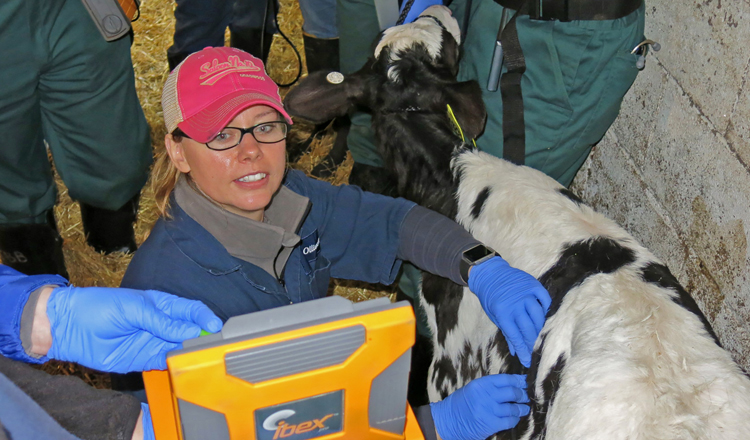
The common saying “There’s more than meets the eye” certainly rings true when it comes to identifying disease in dairy calves. Watching for clinical signs is a must-do, but that tends to be a small piece of the puzzle, according to veterinarian Terri Ollivett.
In her work as an associate professor at the University of Wisconsin-Madison School of Veterinary Medicine, one of Ollivett’s focus areas is the use of lung ultrasound as a tool for identifying respiratory disease in calves. She talked about its use on farms during the February Hoard’s Dairyman webinar.
When it comes to respiratory disease, she said, “The calves that look sick are likely a small fraction of the total amount of animals that actually have disease.” Ollivett explained that cattle, in general, are prey species, which means they do a good job hiding abnormalities and don’t broadcast when they are feeling sick. She shared that for every calf visibly sick with pneumonia, a farm could have one to four more calves with subclinical pneumonia.
Ollivett said that new cases of respiratory disease tend to be subclinical in nature at first, and they can be subclinical for a few weeks before any symptoms show. To get a better response to treatment, calves must be treated earlier, and that is where lung ultrasound fits in.
Ultrasound can reveal if a lung is normal or abnormal. Ollivett noted that just because a calf looks very sick, it doesn’t mean its lungs are really bad. Likewise, just because a calf appears healthy, it doesn’t mean its lungs are normal. The opportunity to peek inside calves gives caretakers another datapoint to make decisions and treat animals that will benefit from therapy sooner.
“The information gained is so useful,” Ollivett stated. She sees lung ultrasound as a tool for overall calf management because any time steps of calf raising go haywire — from a dirty maternity area to failed passive transfer, calfhood diarrhea to heat or cold stress — an uptick in pneumonia can be found in the lungs. Routine lung scanning can unearth protocol problems that can be addressed before too many calves are affected.
“The lungs are the window to calf heath management,” she summarized. To learn more, watch the February Hoard’s Dairyman webinar, “Using lung ultrasound as a management tool.” The sponsor for the webinar was Agri-Plastics.








